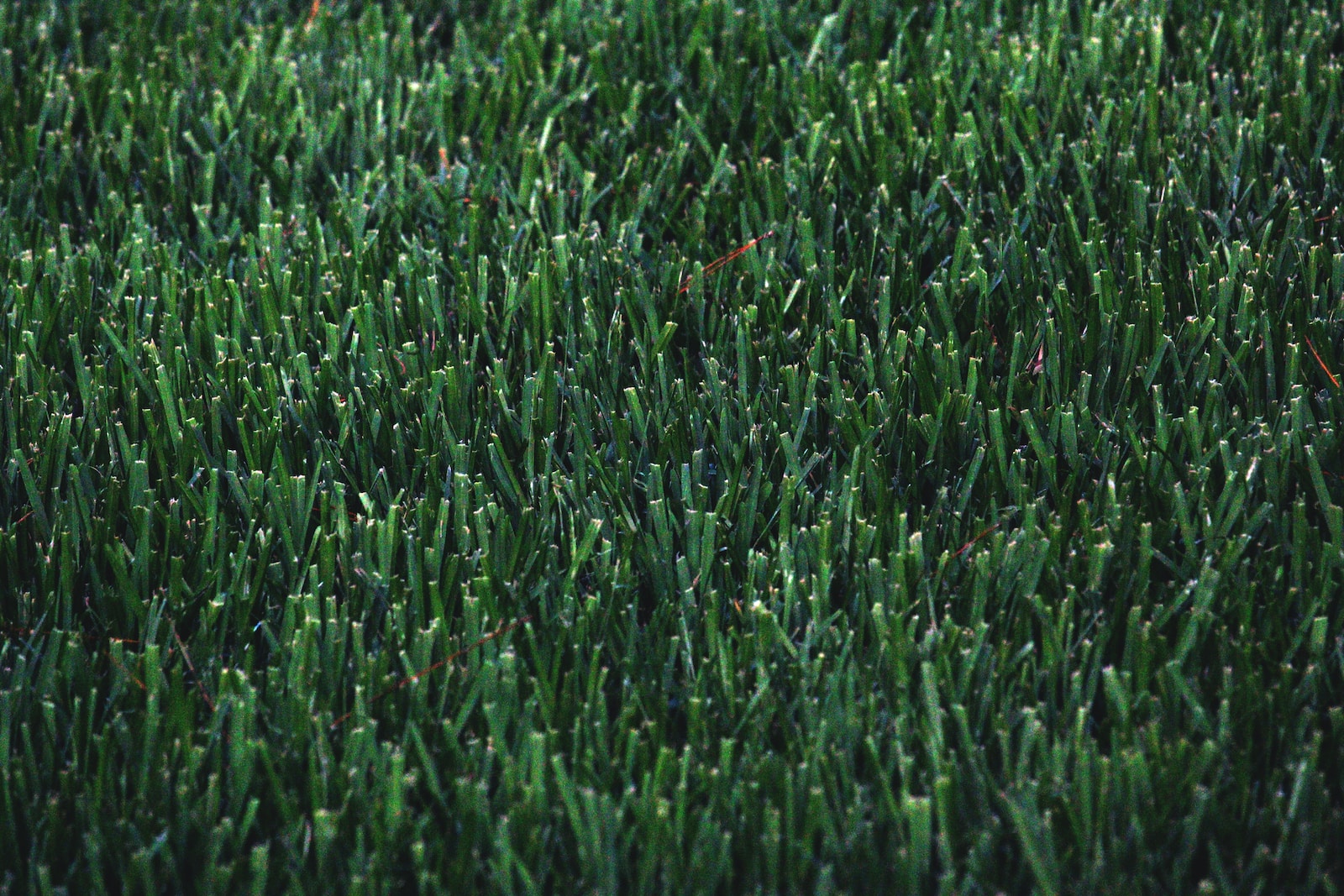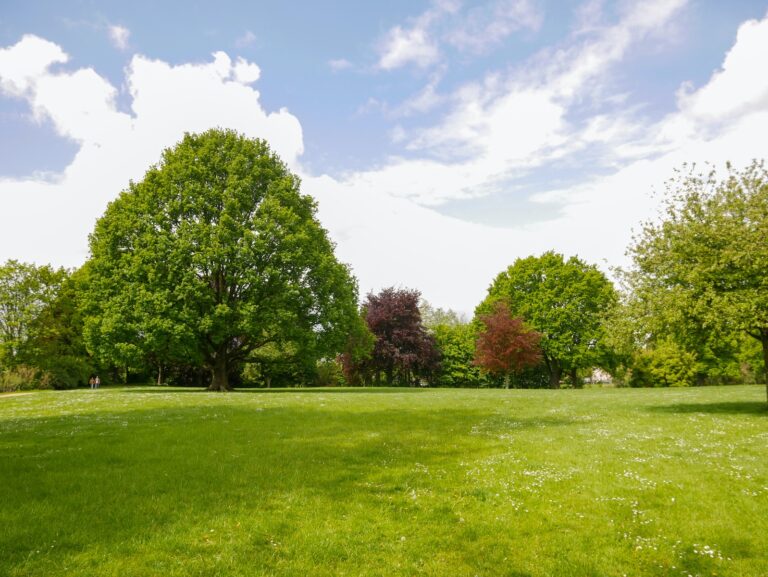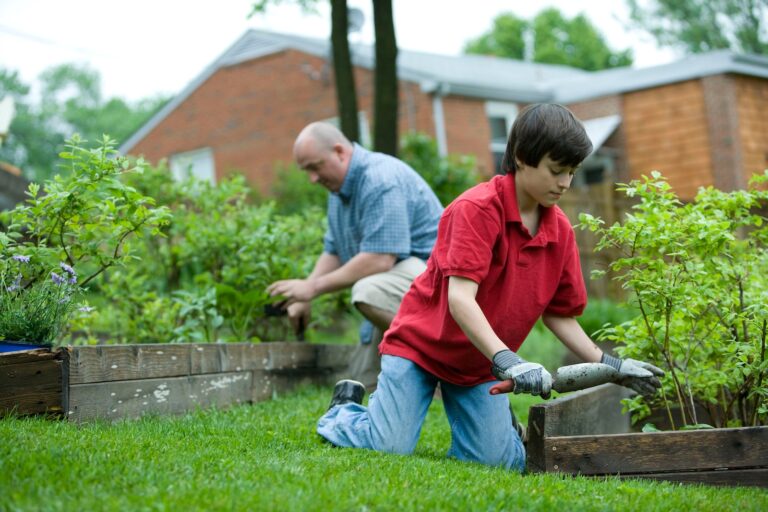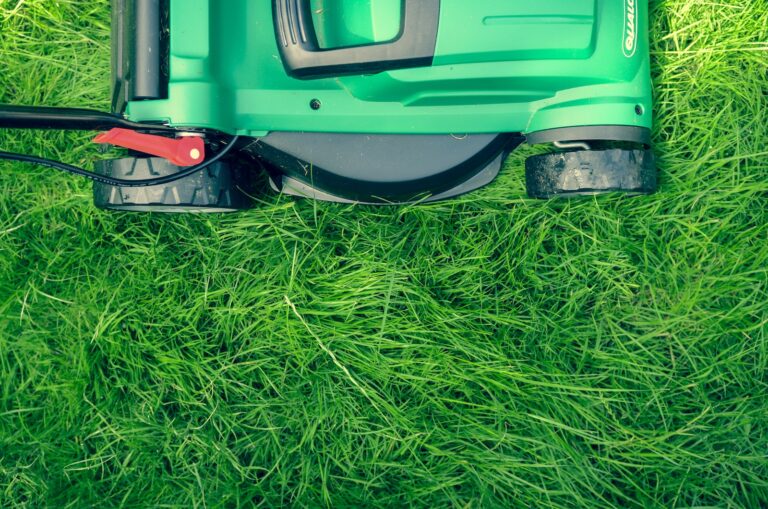How to Create a Low-Maintenance Lawn with Native Plants and Grasses

Do you dread the endless hours spent mowing, watering and fertilizing your lawn every week? Are you looking for an eco-friendly solution that requires little to no maintenance? Then look no further! Native plants and grasses offer a simple yet effective way to transform your yard into a vibrant and low-maintenance paradise.
In this blog post, we’ll explore how easy it is to create a stunning native landscape that not only saves time but also benefits local ecosystems. Get ready to say goodbye to high maintenance lawns and hello to beautiful greenery that practically takes care of itself!
What Makes a Low-Maintenance Lawn?
1] Mow high. Set your mower blade to its highest setting — at least 3 inches. This will encourage deep roots and prevent weeds from taking root.
2] Water deeply and less often. Watering deeply encourages roots to grow down, making your lawn more drought-resistant. So water less frequently, but give your lawn a good soaking when you do water.
3] Don’t fertilize. Over-fertilizing can actually weaken your lawn, making it more susceptible to disease and pests. If you must fertilize, use an organic fertilizer sparingly.
4] Aerate annually. Aeration helps loosen compacted soil and thatch, allowing air, water, and nutrients to reach the roots of your grasses.
5] Weed the lawn regularly. Pulling weeds by hand or using an organic weed killer can help control pesky weeds without harming your grass.
6] Overseed regularly. Seeding with a quality turf grass will help fill in any thin or bare spots and make your lawn look healthier and more uniform.
7] Maintain healthy soil. The health of your soil is paramount to the health of your lawn. Make sure to apply compost and other natural amendments, so your lawn gets all the nutrients it needs to stay strong and lush.
Benefits of Native Plants and Grasses for Lawns
If you’re looking for a low-maintenance lawn, native plants and grasses are a great option. They’re adapted to your local climate and don’t require as much water or chemicals to thrive. Plus, they provide habitat for local wildlife and help reduce erosion.
Native plants and grasses are also better for the environment, as they don’t require extra fertilizer or weed killers to maintain. They’re drought resistant and can withstand harsh weather conditions. Native plants and grasses are often more economical too; many native species are inexpensive if bought in large quantities.
Native plants and grasses also look beautiful in any landscape, especially after you’ve installed them. They provide lush colors that add depth and interest to your yard. And because they’re adapted to your local climate, they won’t require much maintenance once they’re established.
Choosing the Right Native Plants & Grasses

Choosing the right native plants and grasses for your lawn is important for creating a low-maintenance landscape. Native plants are adapted to your local climate and soil conditions, so they require less water, fertilizer, and pesticides than non-native species. Here are some tips for choosing the best native plants and grasses for your lawn:
1] Determine the sun exposure and soil type in your yard. Most native plants and grasses prefer full sun, but there are some that will tolerate partial shade. And while most natives will grow in a variety of soil types, there are some that are more particular about their growing conditions.
2] Choose plants that are appropriate for the scale of your yard. If you have a large yard, you’ll want to choose larger species of plants. Small yards can be overwhelmed by large plants, so select smaller varieties instead.
3] Consider the mature size and growth habit of the plant. Some native plants can become quite large, so make sure you choose ones that will fit in the space you have available. Also, be aware of whether the plant spreads quickly or not – you may not want a groundcover that takes over your entire yard!
4] Select plants that are drought-tolerant. Many native plants require little watering once they’re established, so choose those that are well-adapted to dry conditions. This will save you time and money on watering during the summer months.
5] Remember to include native grasses. Many native grasses are drought-tolerant and require little maintenance. And they can provide an attractive groundcover or a low-maintenance lawn alternative.
By taking these tips into consideration, you can create a beautiful native landscape that is well adapted to your local climate and soil conditions – and requires much less effort on your part.
Tips on Maintaining Your Low Maintenance Lawn
If you’re looking to create a low-maintenance lawn with native plants and grasses, there are a few things you can do to make sure it stays that way. First, choose the right plants for your area. There are many native plants and grasses that are well-suited to different regions, so it’s important to select those that will do well in your climate.
Second, take care of your lawn properly. This means mowing it regularly (at the proper height), watering it deeply but infrequently, and fertilizing it only when needed. Don’t be afraid to let your lawn “go wild” every once in awhile. Allowing some of the native plants and grasses to seed themselves will help ensure a healthy, low-maintenance lawn for years to come.
Third, keep an eye out for pests and weeds. If you find either, take steps to address the issue quickly before they spread or damage your plants and grasses. Taking a proactive approach will help you head off any issues and maintain your low-maintenance lawn.
Finally, allow yourself some time to enjoy your lawn. Sit back, relax, and appreciate the beauty of nature around you! By doing these simple things, you can enjoy having a beautiful, low-maintenance lawn in no time.
Considerations for Climate, Soil & Water Needs for Native Plants & Grasses

When it comes to selecting plants and grasses for your landscape, it is important to consider the climate, soil and water needs of the plants. For example, some plants may require more water than others, and some may be more tolerant of drought conditions.
Additionally, some plants may prefer certain types of soil, such as sandy or clay soils. It is also important to consider the amount of sun or shade that a particular plant or grass will need in order to thrive.
When selecting native plants and grasses for your landscape, it is important to choose species that are well-adapted to the local climate and soil conditions. By doing so, you can create a low-maintenance lawn that requires minimal watering and fertilization. Additionally, native plants and grasses are often more resistant to pests and diseases, which further reduces the need for chemical treatments.
Alternatives to Native Plants & Grasses for Low Maintenance Lawns
If you’re looking for a low-maintenance lawn that doesn’t require much watering or fertilizing, you may want to consider using native plants and grasses. Native plants are those that are naturally found in your area, and they usually don’t need as much care as non-native species. Here are some alternatives to traditional turf grasses that can provide you with a low-maintenance lawn:
1] Sedges (Carex spp.): Sedges are a type of grass-like plant that is native to North America. They have long, thin leaves and grow in clumps. Sedges are tolerant of drought and shade, making them ideal for areas that receive little sun or water.
2] Fescue (Festuca spp.): Fescue is another type of grass that is well-suited for low-maintenance lawns. It’s drought-tolerant and doesn’t require much fertilizer or watering. Fescue is available in both seeded and plug form.
3] Bluegrass (Poa pratensis): Bluegrass is a popular type of turf grass that is used on golf courses and other high-traffic areas. It’s relatively easy to care for and tolerates drought conditions well. However, bluegrass does require more mowing than some other types of grasses.
4] Buffalograss (Buchloe dactyloides): Buffalograss is a warm- season grass that is native to the Great Plains region of North America. It’s very drought-tolerant and doesn’t require much fertilizer or mowing. However, buffalograss does need more sun than some other grasses, so it may not be ideal for shady areas.
5] Clover (Trifolium spp.): Clover is often considered an “invasive weed,” but it can actually make a great low-maintenance lawn option. It tolerates shade, requires little watering, and helps to naturally fertilize the soil. Plus, clover has a beautiful green hue that adds life to your lawn without needing much upkeep from you.
Conclusion
Creating a low-maintenance lawn with native plants and grasses might seem daunting, but it is really not as difficult as you may think. With the right knowledge, plan, and preparation, you can have a beautiful outdoor space that requires minimal upkeep. Plus, planting native plants has many environmental benefits that make it an even better choice for your yard! So don’t be afraid to try out this low-maintenance approach to creating your dream lawn – we promise you won’t regret it!

James is a passionate writer and gardener with years of experience in home gardening. He is the author of several articles and blog posts on HomeGardenBlog.com, a platform where he shares his expertise and love for plants and gardening with the world.







